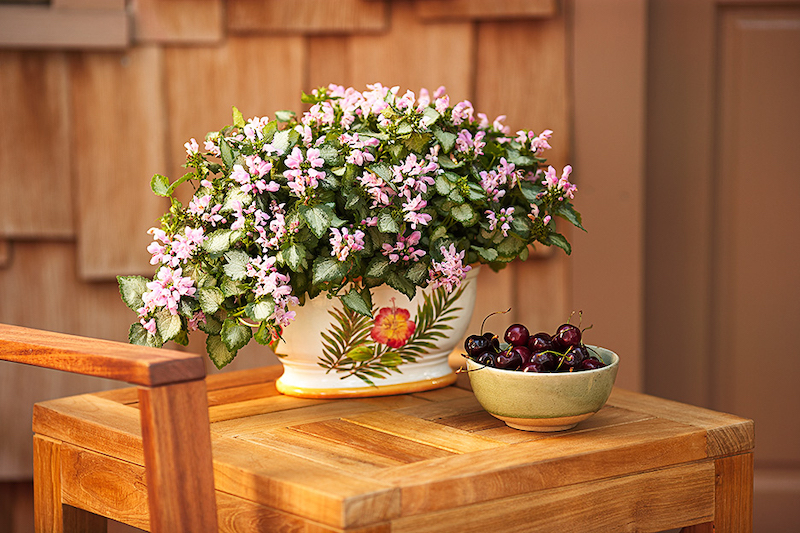The reaching stems and tiny flowers that make Dead Nettle a good groundcover also make this perennial good for planters and hanging baskets. Potted Dead Nettle adds color and texture to a patio, balcony, or window box. Dead Nettle does not get very tall, so growing this plant in a hanging basket or container makes it possible to enjoy the variegated foliage up close. Dead Nettle grown in containers requires a bit more attention than those in the garden, but they are not high maintenance.

Planting Dead Nettle in Pots
Plant Dead Nettle in pots in early spring so the flowers can be enjoyed during the spring and early summer. This perennial thrives in full to partial sun, so select an area that receives about two to four hours of sunlight. Two to three plants can be grown in a 12-inch container, and the stems will cascade over the edge. The ideal container for potted Dead Nettle will have drainage and be made from plastic, metal, or a material that does not allow the soil to dry out quickly.
Best Soil For Dead Nettle in Pots
Dead Nettle thrives in acidic, well-drained soil. This plant is not a heavy feeder, but appreciates a layer of organic compost to support healthy and continued growth throughout the growing season. The potting mix should be moist but still allow drainage. Dead Nettle has moderate water needs but does not like constantly wet conditions. Adding mulch to the pot will help retain moisture and provide additional nutrition for the plant.
Caring For Dead Nettle in Planters
Dead Nettle serves as a thriller and a spiller in a container thanks to its variegated foliage and reaching stems. This is an excellent plant for a hanging basket because the stems will extend over the edge of the container and hang down.

Watering Dead Nettle in Pots
Water potted Dead Nettle when the top few inches of the soil are dry. Depending on rainfall, plan to water the plant daily or every few days. Dead Nettle prefers full to partial shade, which protects the soil from drying out too quickly. Water plants that receive increased sunlight more frequently.
Fertilizing Dead Nettle in Pots
These plants are not heavy feeders, but benefit from fertilizer applications. As the pot is watered, the nutritional value is rinsed away from the soil. Feed potted Dead Nettle monthly during the growing season to replace the lost nutrients. Use a balanced, water-soluble fertilizer.
Winter Care For Dead Nettle in Pots
Dead Nettle is an evergreen in areas with mild winters. Potted plants can be moved to a place where the variegated foliage can be enjoyed. Move the plant to a protected space if the forecast calls for a frost or unseasonably cold temperatures. Dead Nettle is an herbaceous perennial in areas with cold winters. The growth should be cut back, and the potted plant should be stored in a space out of the elements. Potted Dead Nettle does not need a heated space, but it must be kept out of severe weather.
Growing Dead Nettle Indoors
Potted Dead Nettle can be moved indoors and grown as a houseplant during the winter. The plant may not bloom, but the greenery can be admired. Cut the stems back in the fall and place the pot in a spot that receives medium indirect light. Water the pot when the soil is dry. Growth will slow, as the plant goes semi-dormant, so the plant will not need as much water. Do not fertilize dormant plants.
 |
Author Alison Cotsonas - Published 05-16-2023 |
